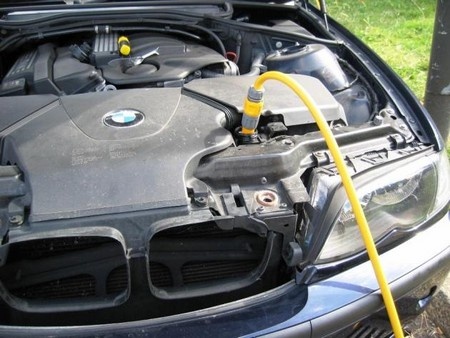Coolant is more thorough compared to a simple drain or refill. In the process, the entire system is power flushed and cleaned. Sludge, rust, and dirt buildup are all flushed out as well as all fluid in the cooling system. A coolant flush removes rust and scale deposits, lubricates the water pump, remove contaminants, perform a complete inspection of your cooling system, and protect against rust and foam. The frequency of a coolant flush depends on a number of factors. Like the size of the engine, your vehicle’s mileage, the climate you drive in, the age of the current coolant, the type of coolant in your system, etc. You can always consult your owner’s manual for your manufacturer’s recommendation. In addition to the accounts mentioned above, you can tell by a change in the coolant’s color. Also, you can use a simple tool named hydrometer to check the ratio of coolant to water. If the amount of coolant is too low, it’s time for a change.
Park your vehicle in a place away from children and small animals with ignition off and the parking brake on, make sure that your engine has cooled down. Begin by doing a proper drainage, remember to put a bucket under the drain valve at the bottom of the radiator and drain your coolant into it. Don’t pour it on the ground or into a storm drain or sewer because it is toxic and environment hazardous. You can pour the old antifreeze into a household drain, clothes-washer pipe or a toilet. Now you can flush your radiator. Open the pressure cap and fill the radiator with water. Run the engine with the heater control on High for about ten minutes and watch out for an engine overheat. Then shut the engine down. When the engine has cooled down, drain the water out of the system into the bucket again. After doing this, close the drain plug and refilling the system with the required amount and proper ratio of coolant and water. Put the pressure cap back on and run the engine with the heater on High until the temperature gauge readings are in normal range to disperse the water and coolant evenly through the entire system. Shut off your engine and clear away the waste. Check the liquid level in the recovery system reservoir after a few days’ driving and add equal water and coolant if the level is low.

Coolant flush
by
Tags:

Leave a Reply